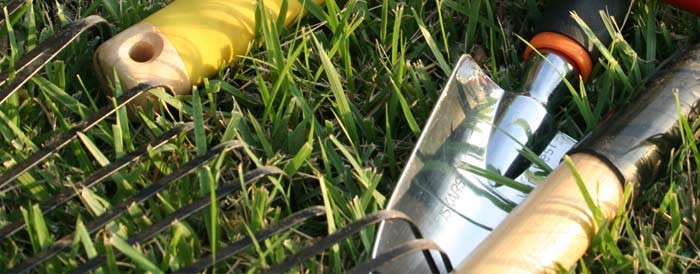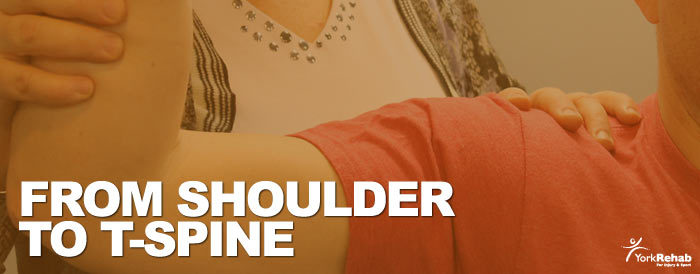Shoulder
Is Chronic Pain something you live with forever? The Answer may surprise you.
Do you have a bum shoulder? A bad knee? Do you have a pain from an injury that has persisted for months or years? You may have talked to friends or co-workers about it and likely heard “Oh that’s chronic pain and it’s something you just live with” or “Well, what do you expect, you’re getting older”. Many people who develop such pains assume that because their injury was a long time ago, their pain is set in stone and there’s nothing you can do about it. Or, as you get older, it will be more difficult to get rid of it. Well, there is hope! These long-lasting pains don’t have to stay around forever; there are several courses of recovery that can take place depending on the nature of the original injury and the natural repair process that has taken place since.
In scenario 1, let’s assume you have pain from an old shoulder injury. It got better initially but just didn’t seem to fully heal, and now you’re left with some lingering pain. Normally what happens during the first few weeks of soft tissue healing (for example with muscle or ligament) is your body deposits scar tissue to rebuild the injured site. If we looked at the tissue fibres under a microscope at this point we would find them disorganized and unlike the original tissue where the fibres are lined up in parallel. If controlled stress (stretching and/or strengthening) is applied to the injured site at this stage, it would begin to remodel and look more like the original tissue. Depending on the severity of the original injury and assuming no other complications, after several more weeks of recovery and exercise the injured site can become pain-free and function well.
However, some people mistakenly believe that a tissue will heal fully on its own with time, or initially they misinterpret the pain that occurs with stressing the injured site and avoid it. In both cases, the remodelling process is not undertaken, and the scar tissue remains disorganized and tight, causing pain every time it is stressed. The good news is if you understand what is happening and are guided through the remodelling process with the assistance of a physiotherapist, you can make changes to this tissue and achieve a gradual recovery over several weeks or months. Typically this will involve an individualized and structured home exercise program – which can involve strengthening and stretching.
In scenario 2, let’s say you find yourself with pain from an old knee injury and no matter how much you try to remodel it following the principles above, the pain doesn’t go away. Sometimes what can happen at the time of injury is the resting position of the joint is disturbed so now it isn’t “hinging” properly anymore. Again, the positive here is this situation can be reversed quickly with the help of a physiotherapist who can identify the right movements to return it to its proper position. It’s like a floor rug being ruffled up in front of a door – when you try to open the door, it gets blocked by the rug. So what you have to do is find the right way to move the rug and then the door will open smoothly again. There are cases where pain that has persisted for years can respond to simple movements rapidly due to this problem.
The bottom line is this: just because you have had pain for months or years from an old injury that seems to be unchanging, it doesn’t mean you’re doomed to live with it. There’s hope! You can simply start by making an appointment with a physiotherapist. They’ll listen to you and do a thorough assessment to determine the nature of the problem, and design a recovery plan for you. Remember, you don’t need a doctor’s referral to book an appointment with a physiotherapist. As long as you’re willing to put in the effort to recover, the results will likely follow. Wouldn’t it be nice to leave behind that nagging pain you thought would be with you for the rest of your life?
Gardening IS Exercise Too
Gardening is usually looked at as a task instead of actual exercise, and the thought of it being the kind of activity with risk of injury is often the furthest thing from our mind. But GARDENING IS EXERCISE and can pose significant risk of injury due to stress on your shoulders, arms, back, hips and knees. Muscles and joints are also susceptible to due to the repetitive strain and extended periods of fixed positioning (kneeling, bending, etc.).
There are a few things that you can do to protect yourself from injury and as you prepare for your next gardening project:
1. Don’t rush…spread out the work: instead of trying to cram everything into one weekend, take two or three weekends to work on your project. Unlike those “DIY” TV Shows that have teams in the background working to turn around a big project in a couple days…you don’t have that same support so don’t aim for an overnight transformation.
2. Warm up before activity: gentle stretches and movement mimicking the type of activity you’re about to perform is an excellent way of preparing your body for the upcoming work session.
3. Use the right tools: finding tools that are ergonomic can help to relieve some of the stress on joints and muscles. Look for tools that have padded handles and spring-action features (i.e. self opening sheers). Gardening gloves with a rubber grip are also recommended. Such gloves produce a better grip, allowing less effort when holding tools which reduces muscle strain.
4. Remember technique: don’t discount the benefits proper of technique…it can make a job much easier. When lifting heaving objects (flower pot, bags of soil, decorative stones, etc.), remember to lift with your legs (not your back). And when doing repetitive work like raking, remember to keep feet shoulder width apart, use your shoulders as much as possible(and minimize bending your back), switch leg and arm positions regularly and avoid twisting your body (reposition your feet in the direction you’re extending).
The whole idea behind a beautiful garden is that you get to spend time it – the last thing you want is to be stuck inside recovering from a preventable injury. So remember these points to keep away from injury. Happy gardening!
From Shoulder to T-Spine: Become Unconsciously Competent
York Rehab’s Physiotherapists Jen Bladon did a guest post (May 14, 2014) for the move-everywhere.com website, whose mission is to develop an elite health and fitness conference for allied health, fitness and sports medicine professionals. Jen’s article focused on the shoulder along with its complexities and dependencies. You can read Jen’s article here.




